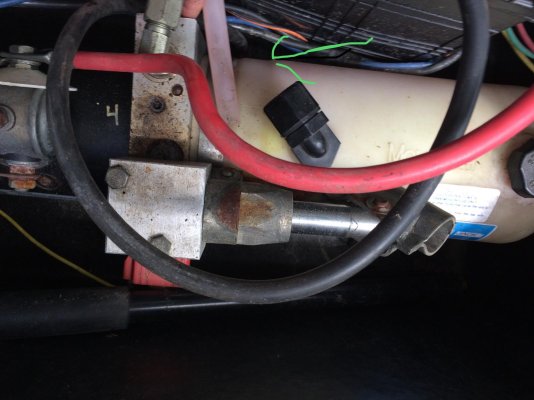I am rapidly learning the workings in the new to me 2003 Hi Low 2203T, and looking for some advice. The hydraulic return line somehow disconnected from the pump, and has probably lost fluid in the system when the top was lowered.
The roof is now raised.
After reading several posts regarding the lift system, I'm thinking the hose should be reinserted into the black plastic fitting (see attached pic).
Then lower the top, check the level and add new ATF fluid to the white holding tank,
Hoping someone in the group can confirm I on the right track?
Thanks,
Tom
The roof is now raised.
After reading several posts regarding the lift system, I'm thinking the hose should be reinserted into the black plastic fitting (see attached pic).
Then lower the top, check the level and add new ATF fluid to the white holding tank,
Hoping someone in the group can confirm I on the right track?
Thanks,
Tom


